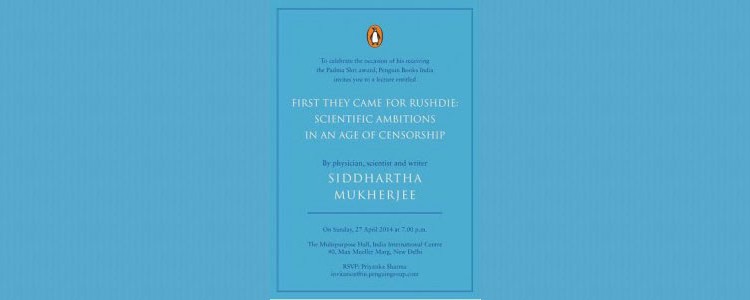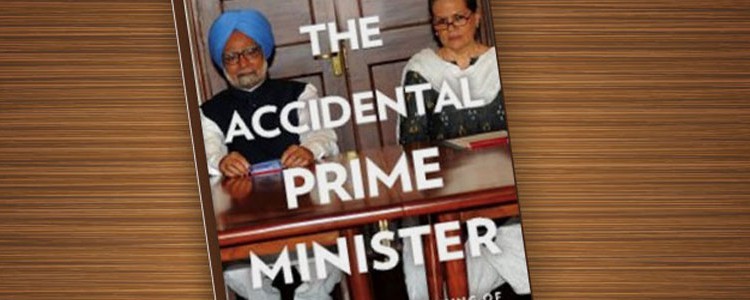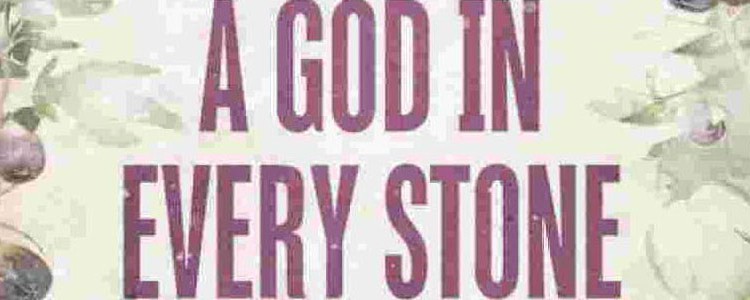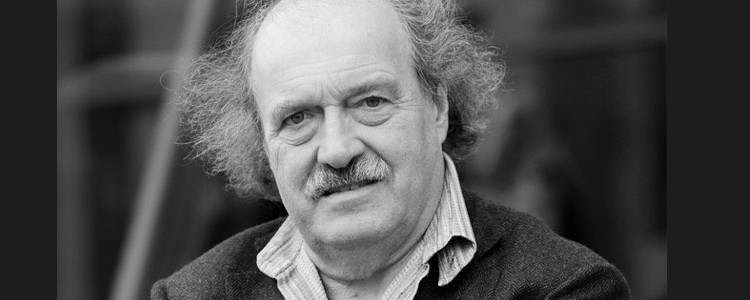 A God in Every Stone is Kamila Shamsie’s fifth novel. It is set at the time of World War I and before the partition of the Indian sub-continent into India and Pakistan. It is about an Englishwoman archaeologist, Vivian Rose Spencer, and her meeting with her discovery of the Temple of Zeus and Ypres war veteran, twenty-two-year-old Qayyum Gul who is returning home to Peshawar. But the story is much, much more than that.
A God in Every Stone is Kamila Shamsie’s fifth novel. It is set at the time of World War I and before the partition of the Indian sub-continent into India and Pakistan. It is about an Englishwoman archaeologist, Vivian Rose Spencer, and her meeting with her discovery of the Temple of Zeus and Ypres war veteran, twenty-two-year-old Qayyum Gul who is returning home to Peshawar. But the story is much, much more than that.
A God in Every Stone will be classified as “Pakistani Literature”. It may have been written by Kamila Shamsie but it could even work as literature of the subcontinent or South Asian literature, with sufficient sprinkling of historical facts that makes it intriguing and interesting for a global audience. It is so clearly positioned in a time of history that it is sufficiently far removed from the present times for the writer to be able to present, analyse, teach and comment–uninhibited. Placing the story during World War 1 and in undivided India is fascinating. It is a story based on some historical facts like the massacre of Qissa Khawani Bazaar (the Storytellers Market) on 23 April 1930, the Khudai Khidmatgars and of the freedom fighter, Khan Abdul Ghaffar Khan. More importantly I liked the placing of it in a time of history when people of undivided India are shown fighting together against the British. ( In this telling of history/fiction, it is immaterial whether they were Pakistanis or Indians, they are fighting against the colonial rulers.) It is as if the novel is showing a “history from below” much like Subaltern Studies did in academics. For instance giving characters such as Najeeb, the assistant at the Peshawar museum; the soldiers hired by the British to figure in the Great War such as Lance-Naik Qayyum Gul; the young prostitutes–girls of mixed lineage; the storytellers; the letter-writer — are people who would barely have figured in previous fictional narratives.
It is a story set so firmly in the city of Peshawar, but makes the wonderful connect of this region with Greece, the rich history of Peshawar and Gandhara art. The forays into Europe of World War 1, the “betrayal” of Tahsin Bey by Viv, the recuperation of soldiers of Indian origin in Brighton, the VAD etc. Even the subtle transformation of Viv’s mother from being horrified by her daughter dispatched to an archaeological dig in Turkey to encouraging her to make a trip to Peshawar. ( ” The truth was, the war had sloughed off so many rules that no one seemed to know any more what counted as unacceptable behaviour in women.” p.75)
Positioning the story in Peshawar is stunning since much of the problems of early twentieth century such as tribal warfare, being a part of NWFP, Swat valley continue to be relevant in the twenty-first century. What also shines through in the novel is that this region has been alive, settled and of crucial geo-political significance for centuries, something that locals tend to forget or maybe are too absorbed in their daily life. What comes through in the novel is that the locals may be active participants ( willing or unwilling is not the question right now) but local dynamics have a powerful impact on their lives. This is evident through the fascinating badalas that are shared. Of these the one that attracts the most crowd is that of the Haji. Well it could be just a comment of the times but it assumes a different dimension if read with a knowledge of what is happening today in world politics –the Islamisation of Terror.
Even the descriptions of the Gandhara artifacts, the archaeological digs etc criss-cross history marvelously. They bring to play not only the political significance of important regimes of the past such as Darius, the Mauryan empire, Alexander etc but of more recent developments such as what is happening in Afghanistan and the Taliban ( i.e. blasting of the Bamiyan Buddhas). But the inextricable link between culture/cultural expressions and politics. The politicians and kingmakers may no longer be alive but their presence is marked by sculptures, pottery shards, etc that have been left behind or excavated. The connection between Gandhara and non-violence is also striking when one recalls that Ashoka who quit fighting after the battle of Kalinga, became a Buddhist and a staunch believer of non-violence, his first “posting” was at Gandhara. Whereas this novel involves Khan Abdul Ghaffar Khan, who too believed in non-violent forms of action. Centuries apart sharing similar beliefs in the same region.
The flitting between the imagined and real worlds. Creating the myth of circlet of Scylax so convincingly could only have been done by a person who is passionate about Greek mythology and loves research. It meshes beautifully in this story.
A God in Every Stone is exquisite. With this novel Kamila Shamsie has set a very high benchmark for literary fiction–worldwide.
*****
( After reading A God in Every Stone I posed some questions to Kamila Shamsie via e-mail. )
Q1 Have the film rights been sold to this book? Who chose the extract for the Granta special?
No. And I chose the extract.
Q2 How did do you decide upon this story?
I didn’t. I had decided on a very different story which started with the massacre in Qissa Khwani/the Street of Storytellers in 1930 and continues until 2009. But my plans for novels always end up going astray. It did have both archaeology and the anti-colonial resistance in Peshawar as elements right from the start so the germ of the novel was always there but finding the story was a slow winding process which involved lots of deleting and quite a bit of re-writing.
Q3 Where was the research for this book done?
Mostly in the British Library where they keep colonial records – and also have a wonderful photography collection. I also went to some of the novel’s locations in Peshawar. And the Internet is an invaluable tool for research, of course.
Q4 How did the idea of a woman archaeologist, Vivian Rose Spencer, strike you? I wish she had more of a presence in the book.
The idea of an English archaeologist struck me first – originally the archaeologist was going to be male but while reading a piece of travel writing by the Englishwoman Rosita Forbes who was in Peshawar in the 30’s I became interested in the experience of Englishwoman in Peshawar. At that point the structure of the novel was very different and there were more primary characters. I’m pretty sure that, regardless of Rosita Forbes, I would have made the archaeologist female once it became clear that the soldier and archaeologist were the two primary characters. I wasn’t about to write a novel in which both the main characters are male. Male writers do more than enough of that!
As for wanting her to be more of a presence – she has more pages in the novel then anyone else. But her story is more the focus of the first half of the book. The anti-colonial story has to shift it’s focus to the Peshawaris.
Q5 How much history did you delve into? Did the historical research come before the writing or specific research happened after the story took root?
Lots. And lots. I research and write as parallel processes – and the research doesn’t really stop until I’ve finished the book.
Q6 This is literary fiction similar to what Subaltern Studies is in academics–telling the histories from “below”. You made heroes of figures who were considered rebels in “mainstream” narratives. Did this happen consciously?
Whose mainstream?, would be my first response to that.
What I am interested in, which relates to your question, is the stories that have received less attention than other stories. Whether it’s women archaeologists rather than men archaeologists, Indian soldiers in WWI rather than English soldiers, the non-violent Pashtun rather than the one who picks up a gun.
Q7 What is the difference between literary fiction, historical fiction and fiction set in history? Would A God in Every Stone even fit into any of these categories?
It’s not something to which I give any thought when writing a novel. Which category will make people want to read it?
Q8 There are many women characters in your novel, who only serve purpose for that particular moment in the story, no more. Yet their fleeting appearances are powerful, almost like a painting, they leave a deep imprint on one’s mind. For instance the infant bride and the teenage prostitute, are they figments of imagination or based upon sketches that you came across?
I certainly see then serving a purpose beyond a single moment. Everything in a novel has to serve the entire novel. (The infant bride grows up to be a very important part of the novel – she’s the green-eyed woman.) They aren’t based on sketches. I know there were prostitutes in the Old City and I know very young girls were given away in marriage. Beyond that, I worked out the particular stories that best suited my purpose.
Q9 Why did you choose to write about Khan Abdul Ghaffar Khan or “Frontier Gandhi” ?
I grew up barely even hearing his name which is why I wanted to write about him. He’s been written out of Pakistan’s history, except in KP, which is a terrible shame. Also, he was such an important figure in his own right that it seems only correct that we should call him by his own name or honorific – Ghaffar Khan or Bacha Khan – rather than by reference to anyone else, regardless of who that anyone else is.
Q10 Are the badalas yours or recorded?
Mine.
Q11 Have you ever worn a burqa. The confusion that you show the young girl to be in can only come from an experienced moment.
No I haven’t. Novelists imaginations fortunately often thrive quite happily without experienced moments!
Q12 Now that you have British citizenship, how do you see yourself? British-Pakistani writer, Pakistani writer, of South Asian origin?
Pakistani. I’ve only been British for 6 months!
13 April 2014
 Last night I attended a public lecture at the India International Centre, New Delhi. It was delivered by Siddharth Mukherjee entitled “First they came for Rushdie: Scientific Ambitions in an Age of Censorship”. It was organised by Penguin Books India to celebrate the occasion of Siddharth Mukherjee having received the Padma Shri. He is a physician, scientist and writer. His book, The Emperor of All Maladies: A Biography of Cancer, won the 2011 Pulitzer Prize. He is currently an assistant professor medicine at Columbia University in New York. Chiki Sarkar, Publisher, Penguin Random House India, announced that her firm would be publishing his forthcoming book–on genes.
Last night I attended a public lecture at the India International Centre, New Delhi. It was delivered by Siddharth Mukherjee entitled “First they came for Rushdie: Scientific Ambitions in an Age of Censorship”. It was organised by Penguin Books India to celebrate the occasion of Siddharth Mukherjee having received the Padma Shri. He is a physician, scientist and writer. His book, The Emperor of All Maladies: A Biography of Cancer, won the 2011 Pulitzer Prize. He is currently an assistant professor medicine at Columbia University in New York. Chiki Sarkar, Publisher, Penguin Random House India, announced that her firm would be publishing his forthcoming book–on genes. 
 He followed it up by reading an extract from an unpublished essay. ( I suspect it is from his forthcoming book.) It was about science, scientific thought and research, especially genetics, in Nazi Germany. In a measured manner, calmly Siddharth Mukherjee read out his paper. Not once did his voice waver while he patiently retold the well-known facts of medicine as practiced in Germany. He talked about Berlin in 1931 and the close link between science and literature. He spoke of the Nazi scientists such as eugenicist Alfred Ploetz who coined the term Rassenhygiene or racial hygiene, Josef Mengel or the Angel of Death who was responsible for the gas chambers in the Auschwitz concentration camps, physicist and Nobel Prize winner ( 1905) Philipp Eduard Anton von Lenard who advocated “Deutsche Physik” as opposed to the ideas of “Jewish physics”, by which he meant chiefly the theories of Albert Einstein, including “the Jewish fraud” of relativity. He spoke of the influence many of these scientists had upon Hitler, even when he was in prison and he wrote of his admiration of them in Mein Kampf. He commented upon the close relationship between the legal wheels that were constantly turning to justify and legitimize these absurdly illogical “scientific” theories, resulting in the enactment of the anti-Jewish statutes called the Nuremberg Race Laws ( 5 Sept 1935) institutionalizing many of the racial theories prevalent in Nazi ideaology. He mentioned the establishment of the Aktion T4 or the euthanasia programme that led to the establishment of extermination centres where inmates were gassed in carbon monoxide chambers. He cited examples and read out extracts of contemporary accounts by scientists and men of letters such as Christopher Isherwood, of how slowly German society was being slowly and steadily cleansed, sloughing of genetic detritus. He argued that there was sufficient evidence of how this young science propped up a totalitarian regime and the cycle was completed by producing junk science. He documented the muzzling of free expression, books, media, radio, cabaret were slowly brought under Nazi doctrine. Music such as jazz and swing or the “negro noise” were stopped. There was a slow and methodical decimation of intellectual and cultural freedom.
He followed it up by reading an extract from an unpublished essay. ( I suspect it is from his forthcoming book.) It was about science, scientific thought and research, especially genetics, in Nazi Germany. In a measured manner, calmly Siddharth Mukherjee read out his paper. Not once did his voice waver while he patiently retold the well-known facts of medicine as practiced in Germany. He talked about Berlin in 1931 and the close link between science and literature. He spoke of the Nazi scientists such as eugenicist Alfred Ploetz who coined the term Rassenhygiene or racial hygiene, Josef Mengel or the Angel of Death who was responsible for the gas chambers in the Auschwitz concentration camps, physicist and Nobel Prize winner ( 1905) Philipp Eduard Anton von Lenard who advocated “Deutsche Physik” as opposed to the ideas of “Jewish physics”, by which he meant chiefly the theories of Albert Einstein, including “the Jewish fraud” of relativity. He spoke of the influence many of these scientists had upon Hitler, even when he was in prison and he wrote of his admiration of them in Mein Kampf. He commented upon the close relationship between the legal wheels that were constantly turning to justify and legitimize these absurdly illogical “scientific” theories, resulting in the enactment of the anti-Jewish statutes called the Nuremberg Race Laws ( 5 Sept 1935) institutionalizing many of the racial theories prevalent in Nazi ideaology. He mentioned the establishment of the Aktion T4 or the euthanasia programme that led to the establishment of extermination centres where inmates were gassed in carbon monoxide chambers. He cited examples and read out extracts of contemporary accounts by scientists and men of letters such as Christopher Isherwood, of how slowly German society was being slowly and steadily cleansed, sloughing of genetic detritus. He argued that there was sufficient evidence of how this young science propped up a totalitarian regime and the cycle was completed by producing junk science. He documented the muzzling of free expression, books, media, radio, cabaret were slowly brought under Nazi doctrine. Music such as jazz and swing or the “negro noise” were stopped. There was a slow and methodical decimation of intellectual and cultural freedom. 

















